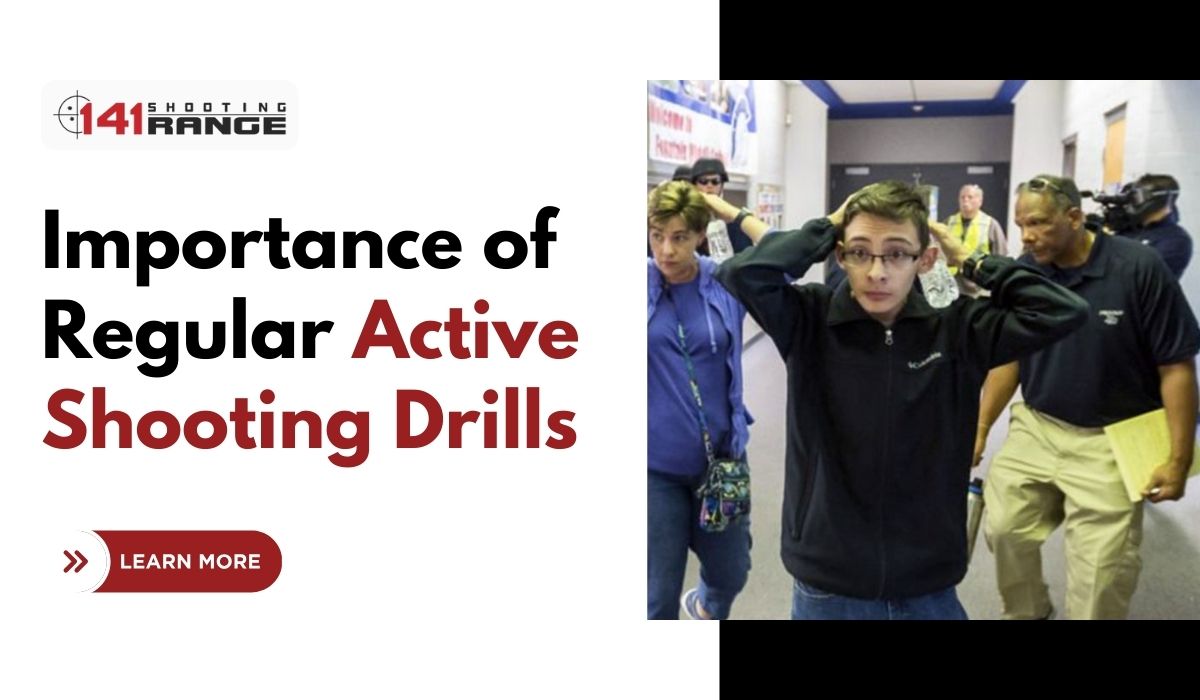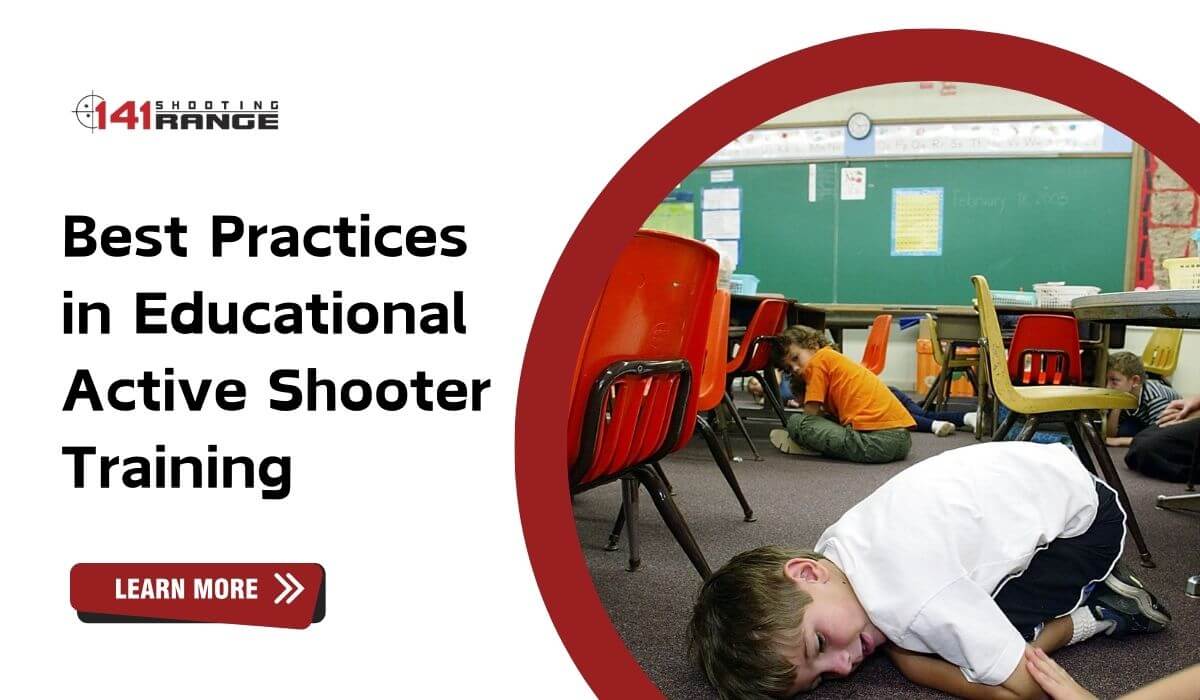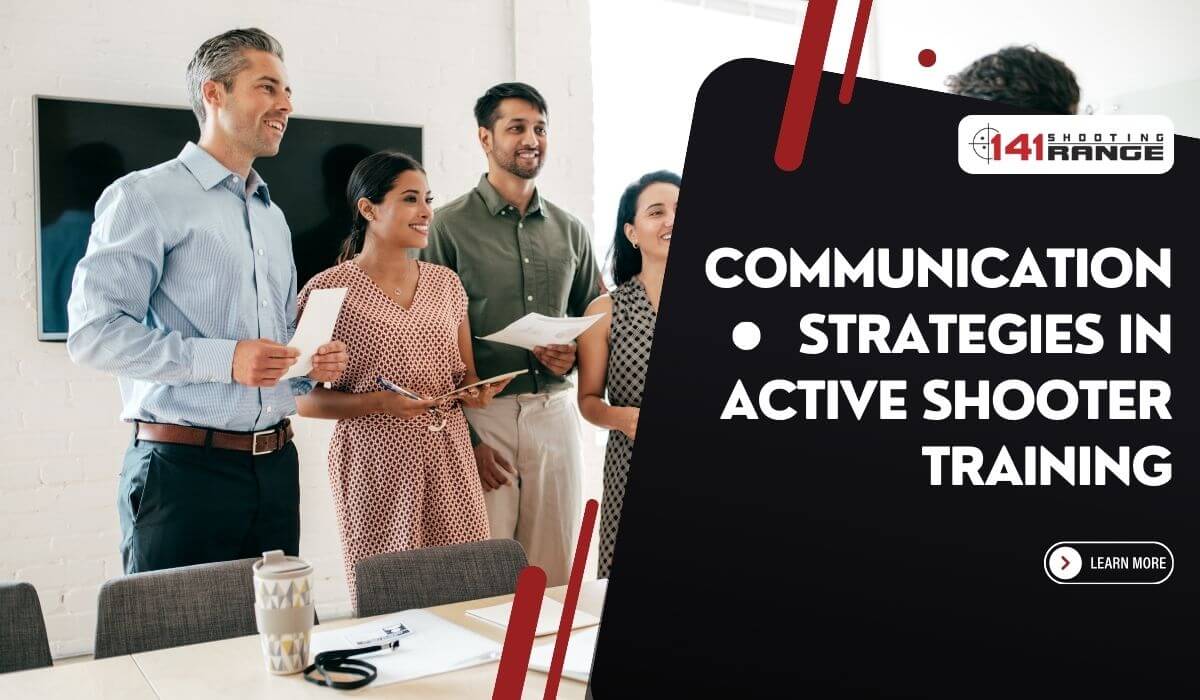In an unpredictable world, organizational preparation is more important than ever. “The Importance of Regular Active Shooting Drills” explores why proactive measures are essential for saving lives and coordinating disaster responses.
The opening echo emphasizes the importance of regular aggressive shooting training. In an age of abrupt threats, these drills foster vigilance, resilience, and quick response, as well as physical fitness. Here, we explore why regular drills are essential to building a fortified atmosphere that can resist today’s unexpected challenges.
Master Preparedness: Active Shooting Drill Insights
Uncertain Times: The Priority of Preparedness:
In a time of unparalleled uncertainty, training is essential. Active shooting drills are necessary since the modern environment is increasingly complex and requires proactive protection. In unexpected situations and possible threats, businesses must foster a culture of readiness beyond reaction.
To handle unexpected situations confidently and effectively emphasizes the need for preparedness. As we examine how regular exercises create this preparedness mindset, it becomes evident that today’s businesses’ proactive approach is crucial to protecting lives and achieving resilience in the face of uncertainty.
Preparedness Culture:
Building a preparedness mindset within organizations is key to resilience in today’s rapidly evolving world of safety. Regular shooting drills are more than just simple exercises; they help build an attitude where being ready is part of how people work together. These drills are more than practice for procedures; they show a commitment to readiness.
Drilling regularly to be ready builds a team mentality that goes beyond individual actions and makes everyone responsible for safety. Through these drills, every company employee contributes to a culture of alertness and readiness.
Replication of Realistic Scenarios:
It’s very important to ensure the drills are as realistic as possible when practicing for active shooter situations. Because these exercises simulate real-life situations, they are important for training.
Replicating actual situations is an excellent way to help people respond better. By placing them in similar situations to those they may encounter, they can fully understand their potential problems.
This immersive method extends beyond academic knowledge and helps people build muscle memory that is handy when under stress. As we discuss the importance of replicating realistic scenarios, we realize how important it is to teach knowledge.
Fast and Effective Muscle Memory Building:
Split-second decisions can determine chaos or control in a crisis. Developing high-stress reflexes requires regular training, according to the first concept of “Building Muscle Memory for Quick and Effective Responses.” Muscle memory from repetitive drills is invaluable in these situations where every second counts.
Regular, realistic exercises help participants learn protocols and develop an instinctual reaction mechanism. Here, we saw how muscle memory affects response times during active shooter scenarios. It also examined how this ingrained preparation helps navigate unexpected hurdles with accuracy and efficacy.
Developing and Testing Emergency Protocols:
Regular drills are essential to testing and improving organizational emergency policies in the ever-changing emergency preparedness scenario.
Active scenarios allow businesses to systematically evaluate the efficacy, efficiency, and adaptability of their emergency protocols. This proactive strategy tests and refines reaction mechanisms for natural disasters and security threats. Protecting lives and assets is easier when organizations evaluate and optimize emergency measures.
Communicating and Coordinating Better:
Improving communication and coordination is crucial to emergency preparedness, providing a rapid and coordinated response to threats. Active shooting activities are crucial to this effort because they assess participants’ readiness and enhance response skills.
These drills go beyond individual abilities to promote seamless communication and cooperation inside the company and with first responders.
A collaborative approach is vital when addressing the unexpected; these exercises foster unity and coherence. Regular drills improve communication and coordination, preparing individuals and organizations to handle crises accurately and effectively.
Psychological Preparedness:
Psychological preparedness is essential for active shooter readiness. Drills to reinforce individuals and organizations against the potential repercussions of active shooter incidents are crucial. Beyond physical routines, this vital preparedness factor includes psychological resilience in high-stress situations.
During crises, these drills prepare people to navigate the complexity of the human psyche by mimicking practical responses. This ensures a more holistic and successful preparedness plan.
Assessing Areas for Improvement:
Regular drills help identify areas for improvement in emergency preparedness, a complex field. Beyond preparation, these drills reveal organizational strategy and protocol shortcomings. Participating in simulated scenarios gives organizations real-time insights into their response systems, revealing areas for improvement.
The drills update protocols, improve communication methods, and fine-tune emergency processes. Through frequent exercises, we identify areas for improvement to strengthen organizational resilience during unexpected shocks.
Enhancing Familiarity with Emergency Resources:
Increasing acquaintance with emergency resources is crucial for good emergency preparedness. Regular exercises familiarize participants with evacuation routes and key tools, reducing uncertainty and confusion during actual incidents.
This proactive strategy equips individuals to handle emergencies and strengthens organizational readiness by ensuring a complete grasp of resources.
Through regular exercises, we increase knowledge of emergency resources, creating a safer and more resilient environment where empowerment is key to effective disaster response.
Proactive Security Promotion:
Security is more important than ever in an unpredictable time. The path to a safer environment starts with proactive security vigilance, planning, and resilience.
This proactive approach is based on regular active shooting drills, which build a sense of readiness in individuals and organizations. As we explore, these exercises are important for simulating events and creating a culture of preparation.
Through routine exercises, individuals and organizations improve their response skills and fortify against threats. This article discusses how regular active shooting drills empower people in an unpredictable world and promote a proactive security strategy.
Conclusion:
In conclusion, active shooting drills are crucial in today’s unpredictable environment. These drills embed preparation within the company culture.
To respond quickly and effectively to threats, businesses replicate realistic circumstances, build muscle memory, and test emergency protocols.
The drills improve communication, coordination, and psychological preparedness, creating collective and resilient reactions. Businesses benefit from regular drills by identifying security areas for improvement, familiarizing themselves with emergency options, and adopting a proactive approach. An uncertain world requires competence, confidence, and a commitment to safety and security.
Frequently Asked Questions:
Practicing regularly cultivates a culture of preparedness, ensuring that individuals and organizations can respond effectively to potential threats.
By simulating real-life scenarios, realistic scenarios enhance participants’ response capabilities.
The ability to respond quickly and effectively in high-stress situations where split-second decisions matter depends on building muscle memory through frequent drills.
Tests and drills ensure established procedures are effective, efficient, and adaptable to various scenarios.
Through drills, organizations and external responders can communicate more effectively and coordinate their response to active shooter situations.
Psychological preparedness is addressed through drills, which promote resilience and acknowledge the mental and emotional aspects of responding to active shooter incidents.
Drills are valuable tools for identifying areas for improvement. Organizations can enhance their overall performance by refining strategies, updating protocols, and improving preparedness.
Drilling regularly increases familiarity with emergency resources, evacuation routes, and critical tools, reducing uncertainty and confusion in an emergency.
By training individuals and organizations to be vigilant, prepared, and resilient in the face of threats, drills promote a proactive approach to security.
As part of organizational readiness, drills help individuals navigate challenges with competence, confidence, and a steadfast commitment to safety and security.






